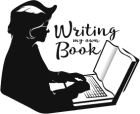Marketing isn’t a tack-on. It’s something you should think about from the moment your book becomes a concept.
In the developing world of indie publishing, you are your own market strategist (unless you hire someone to do this for you). The sooner you start filling your marketing toolbox, the easier it will be to get your book noticed in the marketplace.
Let’s take a quick look at today’s book marketing toolbox.
- Website
- Social Media
- Press Kits and Press Releases
- Television/Radio Interviews
- Book Signings
- Reviews
- Speaking Engagements
Website
Your website is the most important element of your marketing plan. It’s the place you’ll send everyone, so it must look good. If you do things right, it will also be the place to which Google sends organic search traffic.
Social Media
Social media is about engagement. It isn’t about pestering everyone in your network with announcements that your book has been published. It’s about sharing things that are meaningful to your potential audience.
If you are publishing a book for business, use LinkedIn for your social media engagement. If your book is fiction, Twitter and Facebook are both appropriate platforms.
Press Kits and Press Releases
Press kits (also known as media kits) and press releases must be extremely professional in format. A poorly packaged kit or improperly formatted press release says your book isn’t worth reading.
Interviews
Television and radio interviews are an excellent way to increase exposure to your book, especially in the non-fiction market.
Book Signings
Book signings can be far more than a table in a bookstore. They can be events with careful planning.
Book Reviews
Book reviews are only as good as the person providing the review. Never pay for reviews.
Speaking Engagements
Speaking engagements give authors the opportunity to increase exposure and to sell their books.

